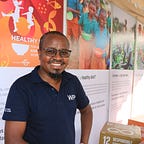WFP Continues Supporting School Meals in Kenya
New kitchens and improved hygiene
After almost forty years, the World Food Programme formally handed over the financing and day-to-day management of school meals to the Government of Kenya last year. A moment to be proud of as it is one of the largest locally-procured and fully government-financed school feeding programmes on the African continent.
A sustainable school feeding programme that incorporates nutritious and diet diverse meals linked to smallholder farmer production is a key strategy for the achievement of the Zero Hunger Challenge and the SDGs.
But WFP did not simply walk away from this crucial safety net. It remains an-ever-present partner giving technical support whenever needed. For instance, WFP has supported training on monitoring and evaluation as well as on food safety and quality, introduced new menus made up of locally available foods, and trained chefs on safe food handling and preparation skills.
In addition to this, WFP has continued to support the development of a critical hardware component of the school meals — the school kitchen — thanks to the support of Mc Govern Dole.
Improving school infrastructure
Over the last three years, WFP has constructed 16 model kitchens in schools across nine counties, the last of which are nearing completion in Wajir county, north eastern Kenya.
The model kitchens feature a store large enough to safely hold food stocks to last a full school term, a cooking platform, a serving area, a water storage tank, a firewood area, a dish washing area, and a hand washing station for safe and better hygiene.
The kitchens are designed in such a way that the air flows freely therefore maintaining cool temperatures at all times. The engineers have also taken advantage of the roofing structure to fit water harvesting gutters.
Considering the environment
In most cases, the waste water from the hand washing stations is directed into kitchen gardens. With this water, schools can grow their own vegetables to ensure children get additional nutrients. Fresh vegetables are rare or costly in most arid areas of northern Kenya.
With every kitchen, WFP fits energy saving cooking stoves that cook faster, use little water, and less firewood. The school chefs do not suffer the harmful effects of smoke since this is directed out of the kitchen through a chimney. In addition, the energy saving stoves contribute to environmental conservation. Parents, who are tasked with providing firewood for the school meals, spend lesser time collecting firewood.
WFP is urging the Government to adopt the model kitchen designs for other schools especially those with extremely poor infrastructure — which poses health risks to school children.
These model kitchens coupled with the training on food safety and quality, will go a long way to ensuring that children enjoy healthy, safe and nutritious school meals.
… and above all, get a good education for a better future.
